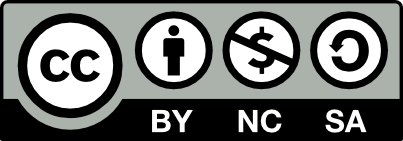Evaluation of gunshot injuries to long bones from pneumatic weapons using a human thigh model. Part I. Introduction and assumptions. Discussion of shot ballistics. Human thigh model = Ocena uszkodzeń postrzałowych kości długich z broni pneumatycznej z wykorzystaniem modelu uda ludzkiego. Część I. Wstęp i założenia. Omówienie balistyki śrutów. Model uda ludzkiego
Wybierz format
RIS BIB ENDNOTEData publikacji: 04.06.2024
Archiwum Medycyny Sądowej i Kryminologii, 2024, Vol. 74 (1), s. 9-27
https://doi.org/10.4467/16891716AMSIK.24.002.19647Autorzy
Evaluation of gunshot injuries to long bones from pneumatic weapons using a human thigh model. Part I. Introduction and assumptions. Discussion of shot ballistics. Human thigh model
Introduction. In accordance with the Polish law, pneumatic weapons are weapons that use compressed gas to set a bullet in motion and generate a discharge energy of more than 17J. In recent years, Poland has seen an increase in crimes committed with pneumatic weapons. The research aim of the present study was to measure the velocity of selected 5.5 mm and 6.35 mm caliber shot and to create a model of a human thigh using a pig femur.
Material and methods. This study used Air Arms Hi-Power Xtra FAC cal. 5.5 mm and FX Bobcat Mk II cal. 6.35 mm carbines and Haendler& Natterman’s Spitzkugel, Hollow Point and Baracuda cal. 5.5 mm and 6.35 mm lead shot and Excite Apollo cal. 5.5 mm and Black Max Lead-Free cal. 6.35 mm lead-free shot. The velocity of the shot at a distance of 10 m was measured and its kinetic energy was calculated; pig femurs were measured and CT imaging was performed.
Results. The 5.5mm caliber shot reached velocities between 253 m/s and 278 m/s, obtaining energies between 27J and 44J. The 6.35 mm cal. shot reached velocities between 242 m/s and 254 m/s and energies between 52J and 59J. Pig femurs had an average weight of 410 g, a length of 239 mm, and a shaft diameter at mid-length of 30.6mm. The thickness of pig femur shaft walls was variable. A ballistic model of the human thigh was created using gelatin available in Poland.
Conclusions:
1. The number of registered crimes with pneumatic weapons and the wide access to pneumatic devices with the possibility of design modifications justify the initiation of experimental studies on the assessment of gunshot injuries from pneumatic weapons.
2. The parameters of the shaft of a pig femur obtained from pigs weighing about 115 kg are similar to those of a human adult femur, which makes it possible to create a human thigh model.
3. Of the 5.5 mm cal. shot, the highest impact energies were generated by barracuda type shot, and of the 6.35 mm cal. shot, it was barracuda type and lead-free shot.
4. The thickness of the bony layer of the pig femur shaft is heterogeneous; the posterior wall of the shaft is the thickest, the lateral wall is the thinnest; however, it shows the greatest individual variability.
Siemaszko A., Kogo biją, komu kradną Przestępczość nierejestrowana w Polsce i na świecie. Warszawa: Instytut Wymiaru Sprawiedliwości; 2001
Emergency War Surgery, Third United States Revision, US Department of Defence, Washington DC 2004
Belmont P.J., Owens B.D., Schoenfeld A.J., Musculoskeletal Injuries in Iraq and Afganistan: Epidemiology and Outcomes Followind a Decade of War. J Am Acad orthop Surg 2016 (24), 341-348
Belmont P.J. Jr., et al. The Nature and Incidence of Musculoskeletal Combat Wounds in Iraq and Afganistan (2005-2009), J Orthop Trauma, 2013 (27), 107-113
Chapman K.A., When the Bullet Hits the Bone: Patterns in Gunshot Trauma to the Infracranial Skeleton. Thesis for the Degree Master of Arts, Texas State University, San Marcos 2007
Huelke D.F., Darling J.H., Bone fractures produced by bullets. J Forensic Sci 1964; 17: 461-469,
Bellamy R.F., Zajtchuk R., Conventional Warfare Ballistic, Blast and Burn Injuries. Walter Reed Army Medical Center, Walter Reed Institute of Research Washington DC 1991
Di Maio V. J.M., Gunshot Wounds. Practical Aspects of Firearms, Ballistics, and Forensic Medicine, Second Edition. CRC Press LLC 1999, ISBN 0-8493-8163-0
Wightman G., Beard J., Allison R.. An investigation into the behaviour of air rifle pellets in ballistic gel and their interaction with bone. Forensic Sci Int 2010; 200: 41–49
Nguyen T-T. N., Tear G.R., Masouros S.D., Proud W.G. Fragment penetrating injury to long bones, AIP Conference Proceedings 1979, 090011; 2018
https://www.hn-sport.de/en/air-gun-hunting/baracuda-22, (dostęp: 10.08.2023)
https://srut.pl/pl/635-mm/1683-srut-hn-hollow-point-635-mm-200-szt.html, (dostęp: 10.08.2023)
https://srut.pl/pl/55-mm/293-hn-spitzkugel-55-mm.html, (dostęp: 10.08.2023)
https://srut.pl/pl/55-mm/941-hn-excite-apollo-55-mm-150-sztuk.html, (dostęp: 10.08.2023)
https://srut.pl/pl/635-mm/930-srut-skenco-black-max-635-mm-50-szt.html, (dostęp: 20.09.2020)
Stefanopoulos P. K., Filippakis K., Soupiou O.T., Pazarakiotis V.C, Wound ballistics of firearm-related injuries – part 2: Mechanisms of skeletal injury and characteristics of maxillofacial ballistic trauma. Int J Oral Maxillofac Surg. 2015; 44:67-78
Art. 8 Ustawy o broni i amunicji, Dz.U. 1999 nr 53 poz. 549
https://fxairguns.com/rifles/the-bobcat/ (dostęp 10.08.2023)
https://www.air-arms.co.uk/showroom_product/s410-carbine (dostęp: 10.08.2023)
Bochenek A, Reichner M, Anatomia Człowieka, T.1. Warszawa: PZWL; 1990, s. 541-549
Koch C.J., The Laws of Bone Architecture, American Journal of Anatomy, 1917; 21:177-298.
Jayachandra Pilai T., K.lakshmi Devi C., Sobha Devi T., Osteometric Studies of Human Femurs. IOSR JDMS 2014; 13:34-39.
Bochenek A, Reichner M, Anatomia Człowieka, T.1. Warszawa: PZWL; 1990, s. 142
Bochenek A, Reichner M, Anatomia Człowieka, T.1. Warszawa: PZWL; 1990, s. 196
Informacje: Archiwum Medycyny Sądowej i Kryminologii, 2024, Vol. 74 (1), s. 9-27
Typ artykułu: Oryginalny artykuł naukowy
Tytuły:
Collegium Medicum, Akademia WSB,
Akademia WSB w Dąbrowie Górniczej
GC Adwokaci Gradowska Chowaniec Spółka Partnerska, Czeladź
Polska
Katedra Anatomii, Wydział Nauk Medycznych w Katowicach, Śląski Uniwersytet Medyczny w Katowicach,
Śląski Uniwersytet Medyczny w Katowicach
Polska
Wydział Nauk Medycznych,
Akademia Śląska
Polska
Publikacja: 04.06.2024
Otrzymano: 13.01.2024
Zaakceptowano: 25.01.2024
Status artykułu: Otwarte
Licencja: CC-BY-NC-SA

Udział procentowy autorów:
Korekty artykułu:
-Języki publikacji:
Angielski, PolskiLiczba wyświetleń: 362
Liczba pobrań: 196